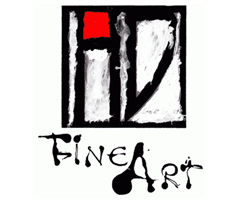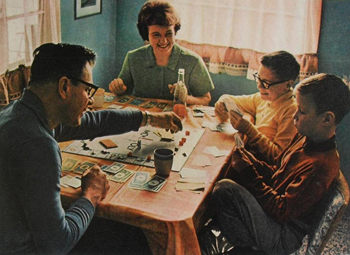Product Description
Tim Liddy Monopoly (1936) A Parker Trading Game 2007 Oil and enamel on copper, plywood back



TIM LIDDY
“Monopoly” (1936) A Parker Trading Game 2007
Oil and enamel on copper, plywood back
Signed in script: Tim Liddy “circa 1936” 2007, red circular ring
Provenance: Kidder-Smith Gallery (Boston, MA)
H: 7 5/8” x W: 6 ½” x D: 1 ½”
With his recent paintings, Liddy has both reasserted the construct of hyperrealist painting and developed a thoroughly unique advancement of that mode by extending the cultural reality of the indexed original. Based on the illustrated box lids of vintage board games, Liddy has recontextualized a subject, which evokes the underlying rules of life. Painted on copper or steel in the precise dimensions of the original, the metal is then manipulated to demonstrate the exact rips and tears from years of usage and includes trompe-l’oeil renditions of the scotch tape that might be holding the cardboard box together, the assorted stains, or the various graffiti of time. Liddy leaves no possibility of ambivalence, these works speak to a concurrent understanding of their original object identity and to themselves as works of art engaged in historical and psychological dialogue.
Tim Liddy Monopoly (1936) A Parker Trading Game 2007 Oil and enamel on copper, plywood back
Jean Serrrière (1893-1968) France
A. Hebrard (closed 1937) Paris
Footed dinanderie bowl, circa 1925
Hand wrought copper with silver incrustations in a repeating triangular motif and contrasting black patination on a rich brown ground.
Marks: JS (artists monogram) A. Hebrard, Paris
For more information see: Art et Décoration Revue Mensuelle D’Art Moderne, Tome XLVII. (Paris: Librairie Centrale Des Beaux-Arts) p.217; Silver of a New Era: International Highlights of Precious Metalwork from 1880 to 1940, (Rotterdam: Museum Boymans van-Beuningen, 1992) p.68, cat.no. 61; La Dinanderie Française 1900-1950, Dominique Forest and Marie-Cécile Forest (Paris: Les Éditions de l’Amateur, 1995) p.231-233.
H: 4″ x Dia: 6″
